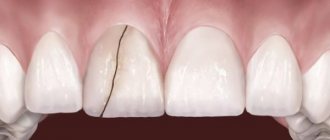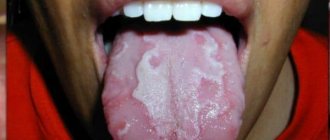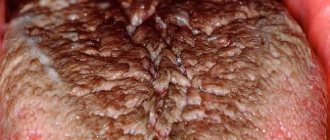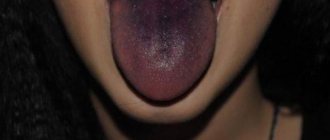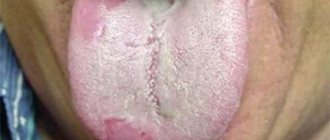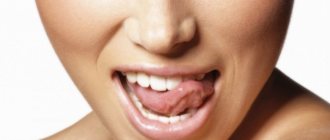People love to tease their own kind, that’s just the way they are. Neighbors willingly rejoice at the failures of their neighbors, believing for the most part that they look much smarter compared to them. And although this is unlikely, it is better not to give others grounds for malice - they will laugh. Finnish writer Marti Larni noted in one of his works that the most natural type of human laughter, among others, can be considered malicious. From childhood, children learn to express their emotions. The most common way to tease a kindergarten classmate or classmate is to simply stick out your tongue.
It's not always offensive
It is impossible to accompany this mimic sketch with a verbal text for a simple technical reason - there is nothing to say. But there is no need for this, and so, without words, everything is clear. However, this is at first glance. Representatives of other nations have a different interpretation of this grimace. She can express not only malice, but other emotions.
The people of Tibet are perhaps the only people on the planet who show respect in this way. When they meet, they joyfully stick out their tongues and smile benevolently. Perhaps for them this is a confirmation of good intentions and the correspondence of words to bright thoughts, something like the absence of a “stone in their bosom.”
The Chinese also do not attach an offensive meaning to this action; for them, showing your tongue means showing an extreme degree of surprise, amounting to fear. Not very pleasant emotions, but they cannot be classified as manifestations of aggression or hostility. “There are no words” - this is how this custom can be interpreted.
For the Polynesian of the Marquesas Islands, it is considered a quite common gesture to stick out the tongue, which means to demonstrate denial or disagreement. They express the same thing as we do when we alternately turn our heads to the right and to the left. By the way, the Bulgarians and other peoples also have differences in this regard; by nodding, they seem to say “no,” and shaking their heads from side to side means agreement. You just need to know these features so as not to be offended by either the Marquesan aborigines or the Bulgarians.
Signs of diseases according to the characteristics of the tongue
If a person is healthy, all his organs and systems are functioning normally, then the tongue will be pale pink in color with a smooth surface, covered with a thin film of transparent salivary secretion, with clearly visible papillae, a smooth and straight central fold (we recommend reading: bright pink tongue in a person : causes and treatment). Any changes in color, the appearance of plaque or any marks indicate problems and malfunctions in the body.
It should be borne in mind that the condition of the tongue can be influenced by the foods a person eats. Before performing a tongue diagnosis, it is recommended that you refrain from eating and drinking at least 2 hours before the examination. You can clearly see examples and comments in the photo accompanying the article.
Plaque color
Very often, the development of pathology is indicated by a plaque that appears on the tongue. In order to determine which organ has failed and at what stage of development the disease is, you should pay attention to the color of the plaque. It can be of almost any shade - from white or bright red to yellow, blue and even purple: (we recommend reading: white-yellow coating on the tongue: causes and methods of treatment)
- yellow – liver failure, gastrointestinal diseases, smoking;
- blue – indicates kidney failure;
- blue/violet – heart or lung disease;
- black – acidosis, infection with a chromogenic fungus;
- bright red – pathologies of the cardiovascular system, blood diseases;
- gray – chronic diseases of the gastrointestinal tract;
- burgundy - speaks of diseases of infectious origin in acute form;
- reddish – inflammatory processes or infectious diseases;
- white – dehydration, acute respiratory viral infections, colds, fungal infection.
When making a diagnosis, it is also important to take into account the intensity and brightness of the color of the plaque on the surface of the tongue.
Tongue shape
In the process of identifying pathologies of organs and systems, the shape of the tongue is no less important than the color of plaque. To determine what disease is developing in the body, the specialist who conducts the diagnosis must pay close attention to this characteristic. The signs listed below may indicate a pathological process. Description:
- changes in relief – deficiency of B vitamins;
- uneven, curved midline – scoliosis or other pathologies of the spinal column;
- enlarged, swollen organ – gastrointestinal pathology;
- excessively thin – impaired metabolism, dysfunction of the circulatory system;
- bulges in the anterior zone – diseases of the bronchopulmonary system;
- an enlarged tip of a tongue that is too long indicates heart failure;
- thickened organ – pathologies of the digestive system, liver failure.
Children's habit
There is no logical explanation for why children stick out their tongues. It’s unlikely that anyone specifically teaches them this, and as they get older, they do it extremely rarely. Perhaps this is some kind of secret of all children, which they do not tell adults, but, growing up, they themselves forget. Their tongue sticking out, firstly, indicates the highest degree of diligence, the desire to do something with special care. Secondly, when doing something, children, like all other people, do not want to be disturbed. When someone tries to distract a child from an interesting activity, he risks receiving a “note of protest” in the form of a sticking out tongue: “Leave me alone!” Interestingly, this manner remains with some adults.
Plaque research
Plaque, in its intensity, color and thickness, also characterizes the presence of diseases. A thin, barely visible layer indicates the onset of the disease; its thickening indicates the unhindered development of the disease. If the plaque becomes less intense over time, this indicates an improvement in the condition and a decline in the disease.
If the plaque is sticky and difficult to remove from the surface, then there is a reason to take care of examining the patient for gastroenteritis; the presence of a putrid odor promises confirmation of the diagnosis. A thin whitish layer, easily removed, with a metallic taste in the mouth, indicates damage to the stomach and intestines.
A greasy deposit like sludge indicates stagnation of food in the intestines , accumulation of excess mucus, and poor digestion of food. A whitish layer at the base of the tongue indicates enterocolitis, the same at the edges and on the front, not reaching the tip, shows pulmonary problems. If the latter type of deposits turns into a foam-like layer, it means that the patient has chronic bronchitis.
A yellowish coating indicates problems with the gallbladder and ducts, and if it is located in the lower region of the organ, then jaundice begins. If the entire tongue is covered with yellowness, the liver is not working properly, there is excess bile, cholecystitis and problems with the digestive system develop.
The brown color of the layer indicates serious problems with the lungs and stomach , the same sign evenly in the middle part of the tongue, symmetrically with respect to the middle groove, indicates bilateral pneumonia. A black-brown coating, difficult to remove, resembling a chessboard, occurs with pellagra, namely, a deficiency of B vitamins and nicotinic acid. At a late stage of the disease, the organ turns red, and the surface resembles a varnished coating.
Diagnosis of diseases of internal organs by language has been worked out over decades of medical practice. But it is the doctor, seeing the first signs of the disease, who will prescribe an examination and determine the true cause of the appearance of changes on the surface of the tongue. The patient can only raise the alarm on his own; all other actions remain the prerogative of the specialist.
The tongue during illness is a sure imprint of the internal state of not only the digestive apparatus, but also other organs. Modern alternative medicine also agrees with this opinion of ancient healers.
Diagnostics by language is capable of identifying diseases and health disorders even at early stages, when, at times, the most modern diagnostic methods are powerless.
Signs characteristic of the tongue of a healthy person
- pink color
- Smooth surface
- no plaque or tooth marks, colored or discolored areas
- covered with a thin transparent film of saliva
- longitudinal central fold straight
- well-defined papillae (small at the tip, large in the middle third, massive clusters at the root of the tongue)
The papillae of the tongue represent approximately ten thousand taste, thermal and biochemical analyzers, connected through nerve conductors to various parts of the intestines, liver, gallbladder, spleen and central nervous system.
It must be borne in mind that in summer the papillae of the tongue have a reddish tint and are slightly enlarged, and in autumn and spring they are slightly yellowish or light. The condition of the tongue can be affected by foods eaten, such as blueberries and beets, excessively hot food, medications taken, the design of dentures, and the composition of the composite from which the filling is made. To reduce the likelihood of error, patients are asked not to eat or drink anything 1-2 hours before their appointment. However, an experienced specialist will check the results of examining the tongue using other diagnostic methods.
Diagnosis of the tongue should be carried out in the morning, on an empty stomach, in natural daylight.
Dividing the tongue into parts according to anatomical structure
- tip
- middle part (back)
- root
- left and right sides
Each part of the tongue is, according to representatives of eastern medicine, a projection of internal organs, the diseases of which can be judged by the changes occurring in the tongue. When examining the tongue, attention is paid to the color, nature and location of plaque, enlargement of various zones, deformation, curvature of the fold, disappearance of the papillae.
According to the ancient Chinese theory of the “five primary elements,” the tip of the tongue corresponds to the Fire element, immediately behind it is the area of the Metal element, the Wood element corresponds to both sides, the Earth element corresponds to the central area, and the Water element corresponds to the farthest, rear part.
Don't tease Australians
Sticking your tongue out in many countries is tantamount to an intention to challenge someone to a duel, so it’s better not to do it just in case. The most acute reaction to this is shown by New Zealanders. Apparently, they perceive this gesture in such an obscene context that they don’t even want to explain the reasons. The fact remains that in this distant island country, the tongue hidden behind the teeth helps preserve them better than all the Orbits and Blend-a-Honeys.
Australians react in approximately the same way, which may be explained by their common ancestors with New Zealanders, British convicts, in whose ancient customs one should probably look for the hidden meaning of the offensive gesture.
Recognition of internal diseases by the condition of the tongue
Signs of damage to other organs are reflected in the color, size and condition of the tongue . Phenomena occur in diseases of the liver, heart, digestive tract and stomach. Most often, it is changes in the tongue surface that indicate the onset of the disease. The appearance of a thin whitish coating indicates that the pathology of the internal organs has not yet manifested itself and is at the initial stage. The grayish color of the plaque indicates the progression of the disease. During the examination, pay attention to:
- smell from the mouth;
- the shape of the tongue;
- condition and structure of the organ;
- shade and intensity of plaque;
- the appearance of neoplasms;
- ability to move;
- the ability to distinguish the taste of foods or a change in perception.
Individual parts of the tongue indicate a disease of the corresponding system in the body or a separate organ. Heart ailments are reflected at the tip of the tongue , followed by the zone of the respiratory organs and lungs, and the condition of the spleen is manifested in the center. On the deep posterior surface, kidney diseases are diagnosed, on the lateral sides, the condition of the liver and bile ducts is diagnosed. The worsening pathology of internal organs is indicated by an increase in symptoms on the surface of the tongue.
Varieties of configuration
During the study, the shape and thickness of the tongue plays a role. A thin tongue indicates a disease of the hematopoietic system and impaired metabolism; an organ that is too thick indicates a dysfunction of the liver and stomach. An improperly functioning digestive system makes itself felt by swelling of the tongue, and an elongated tongue indicates heart disease. If the central stripe on the tongue is curved, then the spine is sick, the appearance of bulges of various locations indicates pulmonary problems, changes on the surface indicate an insufficient supply of vitamins.
Changing the state of the language
Problems also manifest themselves in how the organ behaves:
- malfunctions of the thyroid gland are manifested by trembling of the tongue;
- gastritis will show bright colors and shades on the surface;
- a fungal infection in the body will cause neoplasms throughout the entire area;
- an increase in the acidity of the body will manifest itself as the appearance of ulcerative rashes;
- if the papillae in the front of the tongue become inflamed, this indicates diseases of the skeletal system in the pelvic area.
Don't scare Indian children
Sticking your tongue out at a South American would be an extremely reckless act. The people there are hot-tempered and do not tolerate accusations of cowardice, and this is how they will understand our simple “tease.” At best, you will have to deal with the local police: explain yourself, make excuses for ignorance, which, as you know, “does not liberate...” and all that. And in the worst case, you can personally see the courage of the offended Latino and his ability to stand up for his honor.
Hindus, by sticking out their tongues, demonstrate the highest degree of anger and hostility. It is especially not recommended to scare children in this way - the reaction of parents may, according to our standards, be inadequate, and it is not customary to joke in this way there.
Harmless tease
In Europe and America, although demonstrating one’s own language is considered a sign of low culture, it does not cause very painful consequences. For some reason, only German motorists consider this gesture to be analogous to an extended middle finger (this is how Americans tease when overtaking someone on the highway). Such provocation, which threatens to increase the risk of an accident, will be expensive (the fine for it is up to three hundred euros). But almost everywhere, including here, a protruding tongue is a slightly childish symbol of ridicule with a touch of light irony.
Spots on the tongue
Often spots appear on the tongue - either food was eaten too hot, or, on the contrary, food was cold or sour. But they can also appear because internal organs are not working properly. The spots can be of different sizes, shapes and colors. There may be only one spot or several spots on the tongue. During diagnostics, they can help make a more accurate diagnosis, as well as identify the reasons that caused their appearance. Stains may appear due to:
- lack of oxygen in the brain;
- diseases affecting the brain;
- dysfunction of the hematopoietic organs;
- viral infections;
- necrosis;
- malignant lesion of the tongue;
- regular smoking;
- inflammation;
- bleeding in the mouth;
- stomatitis;
- ailments of the stomach and intestines.
Diagnosis by language requires care; photos and descriptions in the article will help to clarify some points at first.
Why did Einstein stick out his tongue?
The author of the theory of relativity was a strange man. His attitude towards life's blessings and money was disdainful, checks for astronomical sums served as bookmarks, and the great physicist preferred sweaters when it came to clothes. Albert Einstein used the services of a hairdresser only as a last resort, maintaining his reputation as an eccentric and extremely impractical slob. He was also known for being forgetful, and his absent-mindedness only emphasized the image of a genius whose thoughts are occupied with important issues and nothing more.
Among the many photographs, the most famous is the one in which Albert Einstein sticks out his tongue. It is believed that it reflects the character of the scientist, who remained a child in everything not related to theoretical physics. Arthur Sass, a renowned photographer, captured this momentous moment during the celebration of Einstein's 72nd birthday in 1951.
The apparent indifference to his own appearance, demonstrated by the brilliant theorist, does not at all indicate his indifference to his own image, replicated by the media. He liked the image, the photographer received an order for several copies of this portrait, which were later signed and given away to friends.
One of the lucky ones was Howard Smith, a journalist with whom the physicist was friends. After 58 years, the gift was sold at auction in New Hampshire (USA) for $74,000. The dedication written by Einstein addressed a humorous grimace to all humanity.
Changing tongue color
If there are no health problems, the tongue should be pink. Look at your tongue in the mirror. Observe its size, outline, surface, edges and color.
— Raspberry color signals poisoning, which is accompanied by high fever, severe infectious diseases or a severe form of pneumonia.
— Red — disorders in the cardiac and pulmonary systems, blood diseases, infectious diseases.
— The dark red color of the tongue indicates severe renal, toxic disorders.
- Alternating white and red spots are characteristic of scarlet fever.
— If the color is bluish, there are heart problems. A bluish discoloration on the underside of the tongue may be caused by poor circulation, with cardiopulmonary failure.
- Purple color of the tongue - serious diseases of the blood and lungs.
- The tongue has turned yellow - disturbances in the functioning of the digestive organs, liver disease, chronic cholecystitis are likely.
— A black tongue indicates a possible cholera infection.
- A bloodless, very pale tongue is a sure sign of anemia and severe exhaustion of the body.
— Pale coloring of the underside of the tongue indicates pathology of the gallbladder and liver.

